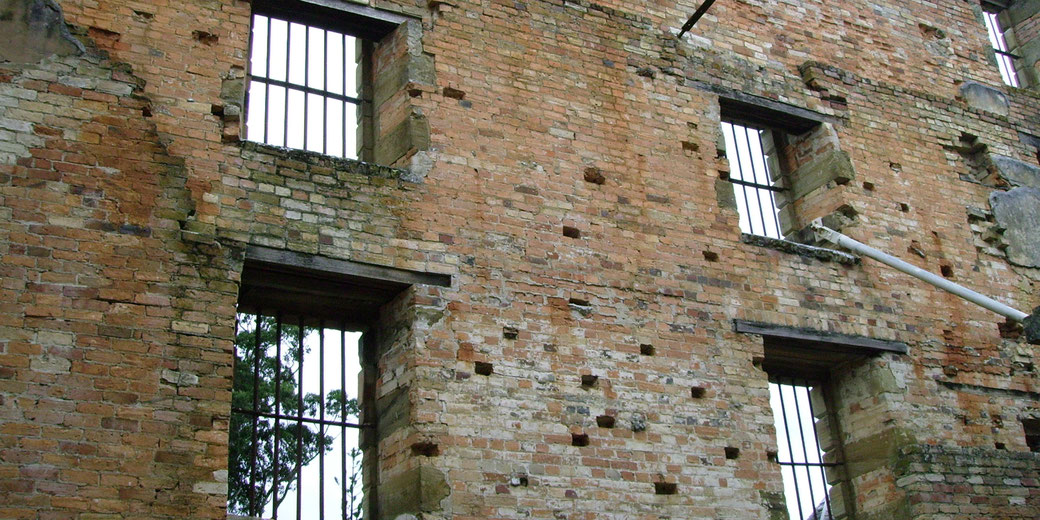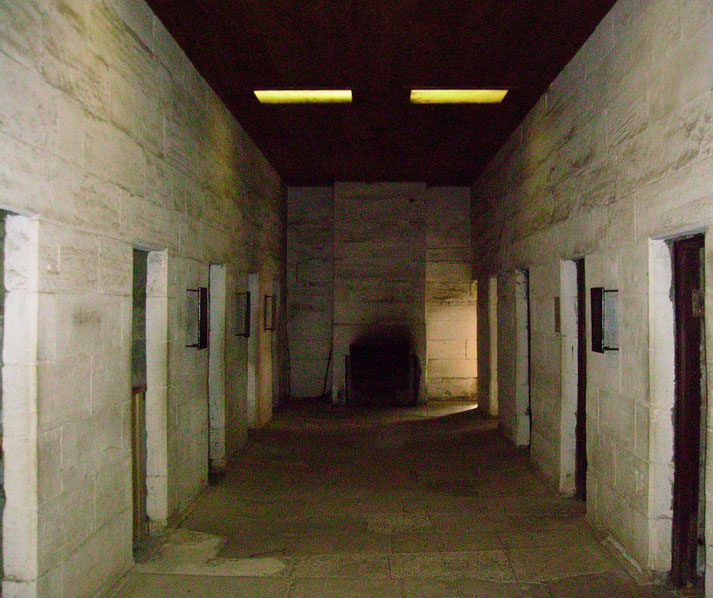What were penal colonies and why were they so horrible?

In some of the harshest and most isolated places in the world, the British Empire sent fleets of condemned prisoners as a twisted solution to help fuel their colonial expansion.
For those unlucky enough to find themselves in one of the ‘penal colonies’, day-to-day life was nothing less than brutal and dehumanizing as they endured grueling labor and severe discipline.
While initially seen as a great success, such colonies slowly attracted a growing number of suspicions. What had gone so wrong?
What was a 'penal colony'?
Penal colonies were settlements specifically established by colonial powers to exile prisoners and enforce punishment through forced labor.
These colonies existed primarily to alleviate overpopulated jails in the home country.
Severe overcrowded prisons in Europe, especially in Britain, meant that governments needed to find alternative solutions.
By the 18th century, Britain’s prison population had ballooned, with over 200,000 inmates in deplorable conditions.
Authorities sought to alleviate this pressure by transporting convicts to distant colonies.
This practice not only reduced the number of prisoners at home but also provided a labor force for developing new territories.
As a result, countries exploited convict labor for economic gain. In colonies like Australia, convict labor was used to build infrastructure, including roads, buildings, and ports.
This was considered to be crucial for the development of these remote areas. The British government viewed this as a cost-effective way to expand and develop its empire.
In addition to infrastructure, convicts were put to work in agriculture and mining, industries vital to the colonies’ sustenance and growth.
Also, European powers used penal colonies to remove political troublemakers from the public sphere, thereby reducing the threat of rebellion or sedition.
In France, for example, the use of Devil’s Island and French Guiana for political prisoners, including the infamous Dreyfus case.
It helped to isolate dissenters and maintain order. Additionally, during periods of high unemployment and poverty, crime rates often soared.
As such, penal colonies provided a way to remove perceived undesirable elements from society.
Between 1788 and 1868, around 162,000 convicts were transported to Australia, which significantly reduced the criminal population in Britain.
When were penal colonies first used?
In 1597, England passed the Act for the Relief of the Poor, which included provisions for the transportation of convicts.
This was the beginning of using remote settlements for punishment. By the early 18th century, Britain regularly sent convicts to the American colonies.
However, with the loss of the American colonies in 1787 after the Revolutionary War, Britain turned to Australia as a new destination for its convicts.
The First Fleet, which carried over 700 convicts, arrived at Botany Bay in January 1788.
This was the first major British penal colony in Australia. For several decades, Britain continued to send thousands of convicts to various parts of Australia, including New South Wales and Van Diemen's Land (now Tasmania), and these colonies became integral parts of the British strategy to expand territorial claims.
During the same period, other European powers adopted similar practices. In 1763, France began using its colony of French Guiana as a penal settlement, which remained in use well into the 20th century.
In Russia, the establishment of penal colonies in Siberia began in the late 17th century.
In fact, Siberian exile became a standard punishment for political prisoners and common criminals alike.
What was it like to live in a penal colony?
Convicts in the penal colonies typically lived in cramped and poorly constructed barracks, where disease spread rapidly due to unsanitary conditions.
What made things worse was the fact that food rations were meager and lacked nutritional value.
This would often lead to malnutrition and other health issues. With little regard for their well-being, authorities imposed grueling work schedules, leaving convicts exhausted and demoralized.
This relentless cycle of work and punishment was intended to instill discipline, but it more often resulted in physical and psychological breakdowns.
When it came to discipline, authorities employed various harsh methods to maintain control.
Floggings and other corporal punishments were common, used to deter disobedience and escape attempts.
In some places, solitary confinement was used to break the spirits of unruly prisoners.
This created an atmosphere of fear and repression, which only exacerbated the already grim conditions of life in the colony.

For many, the physical environment in the colony itself posed constant challenges.
This is because they were often situated in remote and uninhabited locations, making escape difficult and isolation complete.
In addition, contact with family and friends was rare, and many convicts faced the reality of never returning home.
In these remote locations, medical care was often inadequate, compounding the suffering of those who fell ill or were injured.
Were the penal colonies successful?
Penal colonies experienced both notable successes and glaring failures throughout their time in use.
One significant success was the development of infrastructure in remote colonial territories.
Convict labor built roads, ports, and buildings, laying the foundation for future settlements.
For example, in Australia, convicts contributed to the establishment of major cities like Sydney and Hobart.
These construction projects provided essential facilities for colonial administration and trade, promoting the expansion of European influence.

Moreover, penal colonies were part of a shift towards deterrence and reform, which was influenced by Enlightenment ideas of the era.
Thinkers like Jeremy Bentham and Cesare Beccaria argued for more rational and humane approaches to punishment.
As a result, some convicts did manage to rebuild their lives after serving their sentences.
A few former inmates became successful farmers, artisans, or businessmen, integrating into colonial society.
For example, in Australia, some convicts received land grants upon their release, which enabled them to start anew.
This opportunity for reintegration into society represented a partial success of the penal colony system.
Nevertheless, the reality of life in penal colonies often starkly contrasted with these reforming ideals.
This is because the successes of penal colonies often came at a high human cost. In many cases, the promised rehabilitation through labor proved illusory.
Instead of reforming criminals, the harsh treatment frequently led to physical and mental deterioration.
High mortality rates and frequent outbreaks of disease underscored the failure to provide adequate care for the inmates.
Why were penal colonies phased out?
The decline and abolition of penal colonies were ultimately driven by changing attitudes towards crime and punishment in the 19th century.
Public opinion began to shift as reports of just how bad the harsh conditions and abuse was within these colonies.
For example, in 1837, the British government commissioned a report that revealed the brutal treatment of convicts in Australian penal settlements.
These findings sparked outrage and calls for reform, leading to a reevaluation of the system.
In addition, the cost of maintaining distant settlements and transporting convicts became increasingly burdensome.
With the advent of new penal philosophies, such as the penitentiary system, alternatives to transportation gained traction.
The construction of prisons in Britain and other countries provided a more controlled and humane environment for reforming criminals.
By 1853, Britain passed the Penal Servitude Act, which began to phase out transportation in favor of domestic imprisonment.
Influential figures, such as British social reformer John Howard, advocated for the humane treatment of prisoners and the end of cruel practices.
In France, Victor Hugo's writings on the horrors of Devil’s Island galvanized public sentiment against penal colonies.
The growing consensus was that transportation and exile were inhumane and ineffective as methods of punishment.
Moreover, the growing independence movements in colonies and changing imperial priorities led to a reassessment of their utility.
In Australia, for instance, the push for self-governance and the development of a free settler society clashed with the continued use of convict labor.
By the 1860s, local opposition to transportation grew stronger. In 1868, the last convict ship arrived in Western Australia.
By the early 20th century, the last remaining penal colonies, such as those in French Guiana, were gradually shut down.
In 1953, France officially closed its penal colony in Devil’s Island, which finally ended this dark chapter in human history.
What do you need help with?
Download ready-to-use digital learning resources
Copyright © History Skills 2014-2025.
Contact via email
With the exception of links to external sites, some historical sources and extracts from specific publications, all content on this website is copyrighted by History Skills. This content may not be copied, republished or redistributed without written permission from the website creator. Please use the Contact page to obtain relevant permission.





